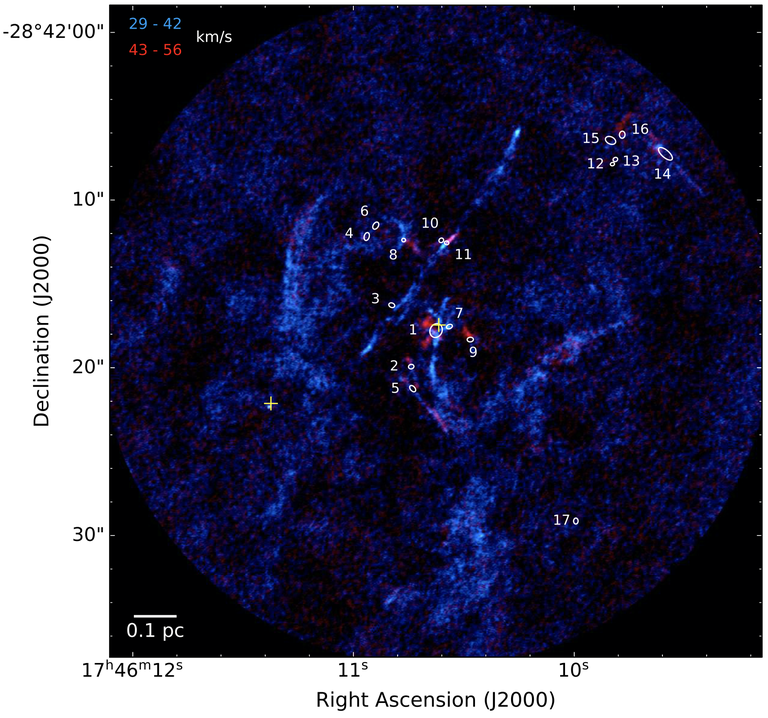Science Highlight: An Active Protocluster in the Massive, Dense Galactic Center Cloud G0.253+0.016
|
Figure 1. Band 6 continuum sources and SiO(5-4) outflows in G0.253+0.016. Sio emission in the velocity range 29-42 km/s is shown in blue, and redshifted emission in the range 43-56 km/s is shown in red. The continuum sources and their respective dendrogram-measured sizes are represented by ellipses. The yellow '+' are the positions of water masers. |
High-resolution ALMA observations are a great probe for star formation in the Galactic Center. In a recent paper, Dr. Walker and his collaborators made use of high-resolution (~ 1000 AU resolution) Band 6 observations with ALMA to detect dust continuum sources and SiO outflows in G0.253+0.016, one of the most massive (> 105) and dense (> 104 cm-3) molecular clouds in the Central Molecular Zone (CMZ). The CMZ is notable in having a substantially lower star formation rate than one would expect based on that measured in nearby galactic disk environments. Eighteen continuum sources are detected, and despite the high density of molecular cloud, no high-mass protostars were detected. Indeed, the median mass of the detected continuum sources is 2 Msun. However, 9 of the continuum sources have outflows traced in SiO(5-4) (see Figure 1) with properties similar to intermediate to high-mass star formation. The dynamical ages of the outflows are estimated to be 103 yr old. Thus, these source are young and may accrete sufficient mass to ultimately form intermediate-to-high-mass stars. The authors discuss the importance of thermal fragmentation relative to large-scale turbulence and magnetic fields at the scales of these protostars, and they conclude that star formation on these scales is similar to that in Galactic disk environments.
|

